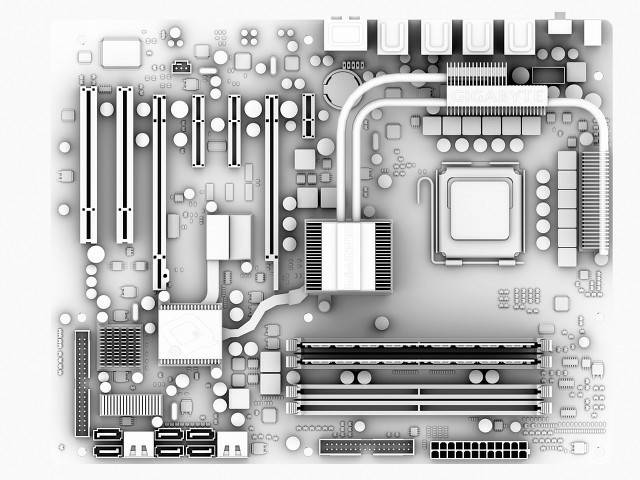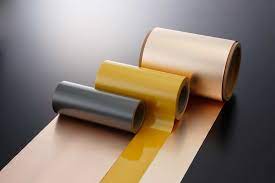PCB substrate by the copper foil layer (Cooper Foil), reinforcement (Reinforcement), resin (Epoxy) and other three major components, since the lead-free (Lead Free) process began, the fourth powder (Fillers) has been added to a large number of PCB boards, in order to improve the PCB's heat resistance.
Introduction to the structure and function of PCB boards.
We can imagine the copper foil as the human body's blood vessels, used to transport important blood, so that the PCB to play the ability to move; reinforcement material can be imagined as the human body's skeleton, used to support and strengthen the PCB does not softly spoiled down; and the resin can be imagined as the human body's muscles, is the main ingredient of the PCB.

The following is to talk about the use of these four PCB materials, characteristics and considerations:
1. Copper Foil
Electric Circuit: conductive line.
Signal line: the signal line that transmits the message.
Vcc: power supply layer, working voltage. The working voltage of the earliest electronic products is mostly set to 12V, with the evolution of technology, the requirements of power saving, the working voltage slowly becomes 5V, 3V, and now more gradually move to 1V, relative to the requirements of the copper foil is also more and more high.
GND (Grounding): The grounding layer. Vcc can be thought of as a water tower, when the faucet is opened, through the water pressure (operating voltage) will be water (electron) flow out, because the action of the electronic components are dependent on the flow of electrons to determine; and GND can be imagined as a sewer, all the used or not used up the water, are through the sewer flow away.
Heat Dissipation: Heat dissipation. Most of the electronic components will consume energy and generate heat, which requires the design of a large area of copper foil to allow the heat to be released into the air as soon as possible, otherwise not only human beings can not stand, even electronic parts will follow the machine.
2. Reinforcement (reinforcement)
Selection of PCB reinforcement material must have the following excellent characteristics. Most of us see the PCB reinforcing material is glass fiber (GF, Glass Fiber) made of glass fiber material is a bit like a very thin fishing line if you look closely, because it has the following personality advantages, so it is often chosen as the basic material of the PCB.
High Stiffness: High rigidity, so that the PCB is not easy to deform.
Dimension Stability: Good dimensional stability.
Low CTE: Low thermal expansion rate to prevent the PCB internal line contacts from detaching and causing failure.
Low Warpage: with low deformation, that is, low board bending, board warping.
3.Resin Matrix (resin mixture)
Traditional FR4 boards are mainly Epoxy, LF (Lead Free)/HF (Halogen Free) boards use a variety of resins and different curing agents with which to match, making the cost rise, LF about 20%, HF about 45%. 
HF board is easy to be brittle and easy to be cracked and the water absorption rate becomes big, thick and big board is easy to happen CAF, need to change to use open fiber cloth, flat fiber cloth, and strengthen the substance which contains the uniformity of impregnation.
A good resin must have the following conditions:
Heat Resistance: Good heat resistance.
Low Water Absorption: low water absorption. Water absorption is the main cause of PCB burst board.
Flame Retardance: must have flame retardant.
Peel Strength: with high tear strength.
High Tg: high glass transition point, Tg high materials are mostly not easy to absorb water, do not absorb water is not the root cause of the board, not because of high Tg.
Toughness: good toughness. The greater the toughness of the less likely to burst the board. Toughness is also known as the destruction of energy, the better the toughness of the material to withstand the impact of enduring the destruction of the ability to be stronger.
Dielectric properties: high dielectric properties, that is, insulating materials.
4.Fillers System (powder, filler)
Early leaded soldering when the temperature is not very high, the original PCB board can also be tolerated, since the lead-free soldering into the high temperature, so the powder is added to the PCB board will be strong PCB resistance to the temperature of the material.
Fillers should be coupled first to improve dispersion and adhesion.
Heat Resistance: Good heat resistance.
Low Water Absorption: low water absorption. Absorption of water is the main cause of PCB burst board.
Flame Retardance: must have flame retardant.
High Stiffness: with high "rigidity", so that the PCB is not easy to deform.
Low CTE: with a low thermal expansion rate, to prevent the PCB internal line joints do not detach to cause failure.
Dimension Stability: Good dimensional stability.
Low Warpage: With low deformation, that is, low board bending, board buckling.
Drill processibility: Because of the high rigidity and high toughness of the powder, it causes the difficulty of PCB drilling.
Heat Dissipation(due to high thermal conductivity): Heat dissipation.
Any Product request on PCB or PCB assembly, please no hesitate to contact us.
Address of Plant
PCB Factory:
A1 Building, B Zone, Ditang Industrial Zone, Ditang Road, Shajing Street, Bao'an District, Shenzhen, China
PCBA Factory:
4/F, Building 21, No. 46 Xinye Road, Yonghe Development Zone, Huangpu District, Guangzhou, China
Office Address:
Room 2201-03 & 2206, Building 1, Changfeng International, No. 96, Li Xin 12 Road, Zengcheng District, Guangzhou City, Guangdong Province, China.